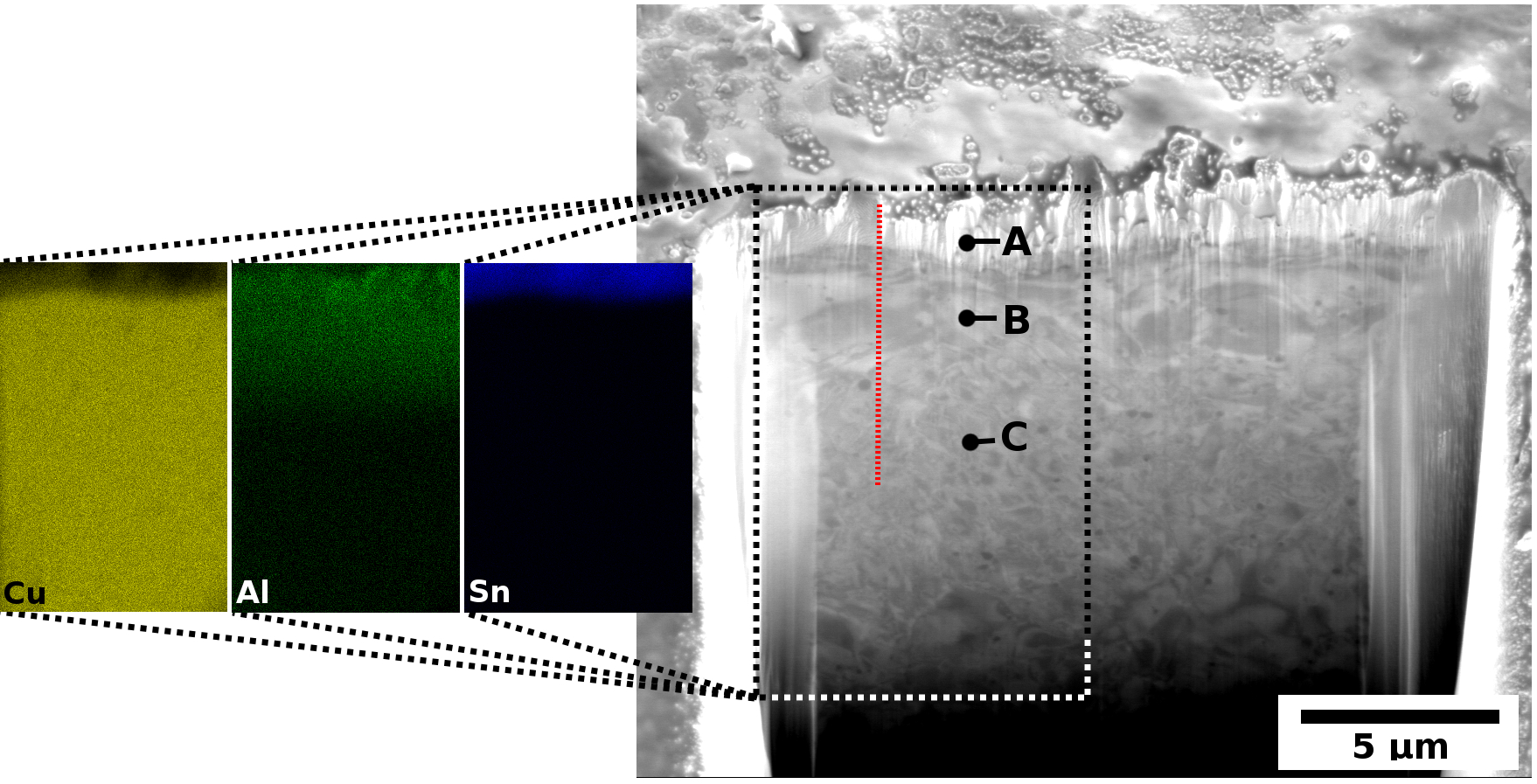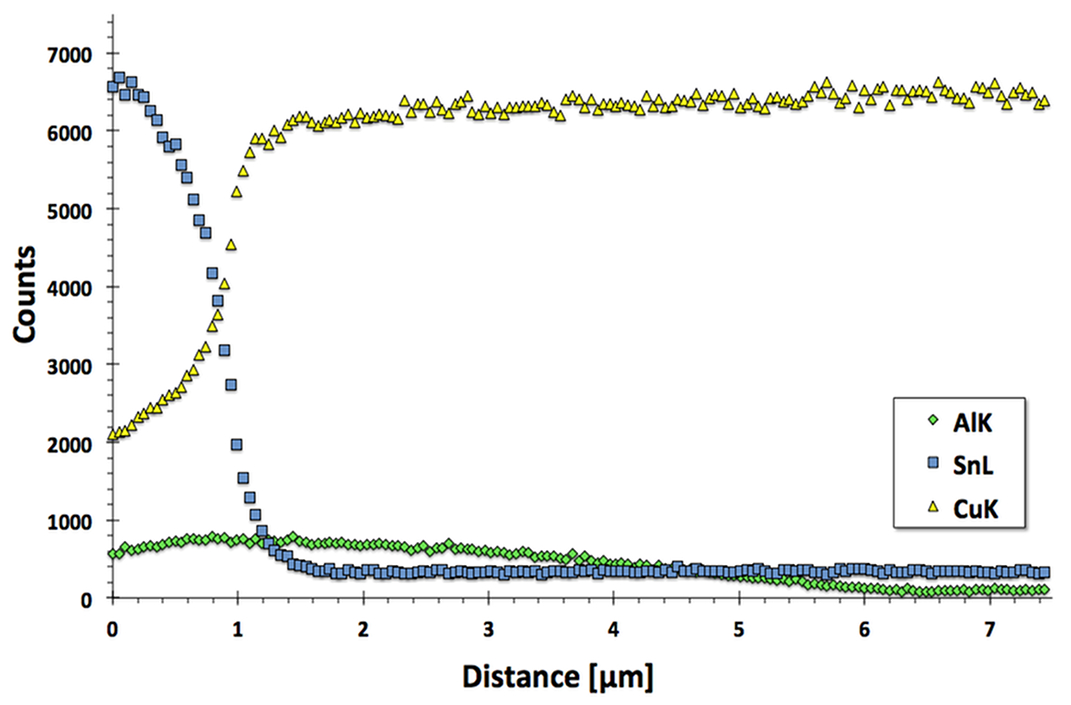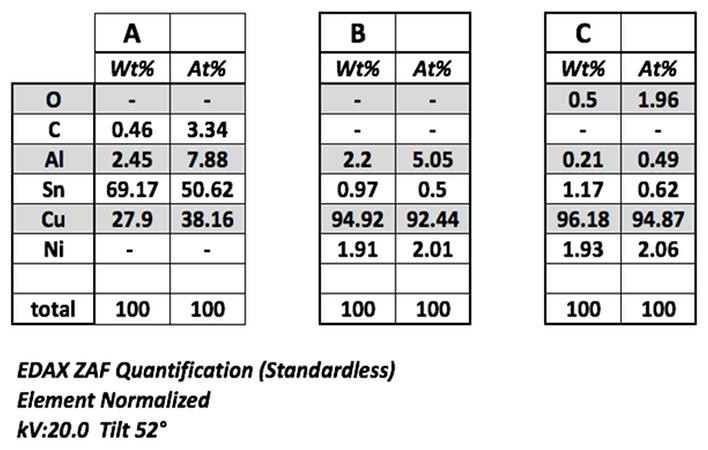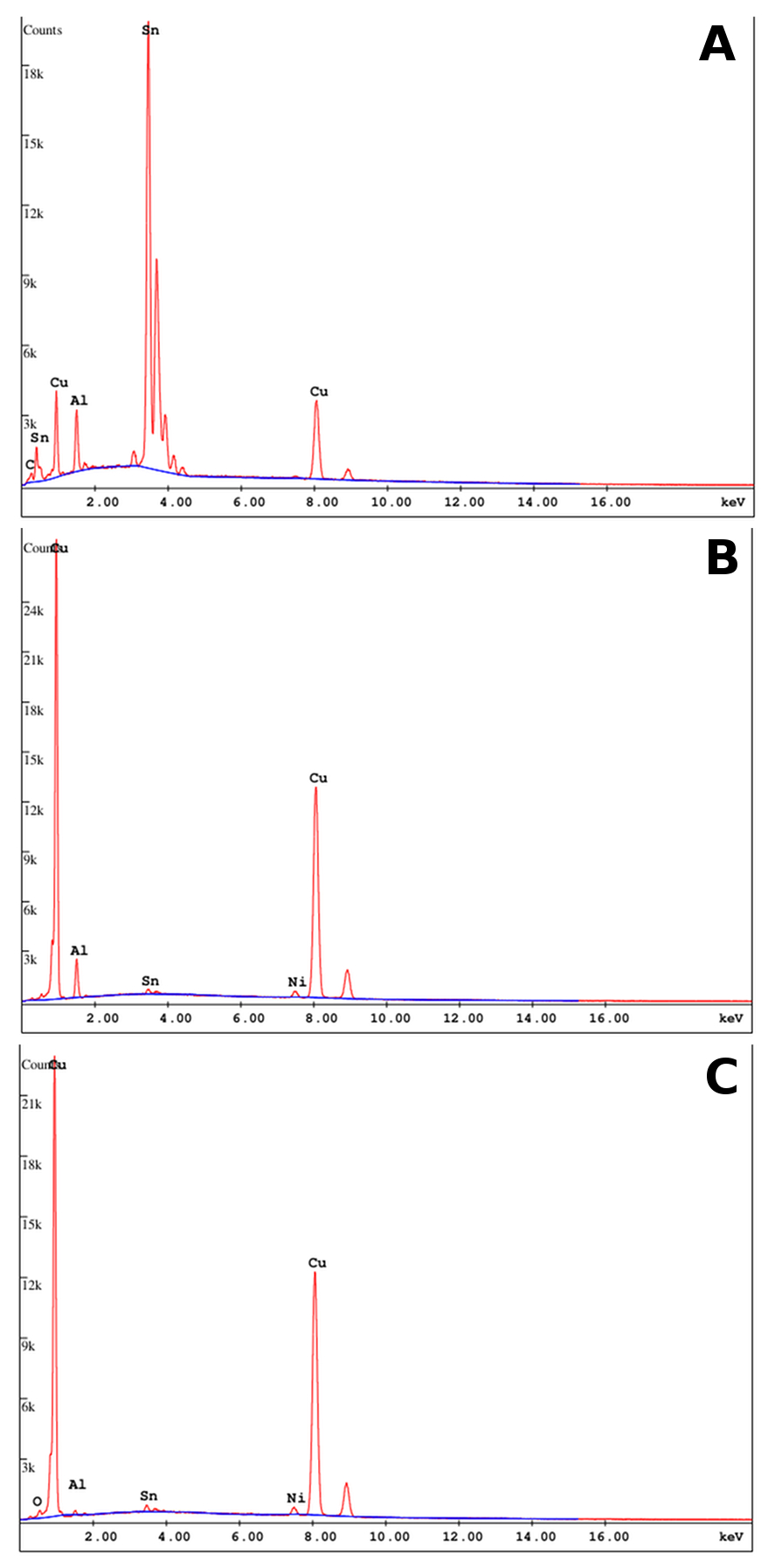EDX (energy-dispersive-x-ray-spectroscopy)
EDX nutzt charakteristische Röntgenstrahlung, die durch die Wechselwirkung energetischer Primärelektronen mit den Atomen der Probe erzeugt wird, zur Identifikation und Quantifizierung der beinhalteten Elemente. Das beprobte Volumen hängt dabei von der Beschleunigungsspannung der Primärelektronen als auch von der Probenzusammensetzung ab. Charakteristische Röntgenstrahlung stammt typischerweise aus einer Probentiefe von ca. 1-2 µm.
SDD Apollo XV EDX Detektor (EDAX AMETEK)
- große Detektorfläche (10 mm2) ermöglicht hohe Zählraten (mehr als 200 kcps)
- Auflösung bis 130 eV
- thermisch-elektrische Kühlung ohne flüssigen Stickstoff
- Genesis 6.2 Software zur einfachen Datenerfassung und Auswertung
The example beneath shows measurements on a FIB cut perpendicular to the surface of a tin coated copper plate. The mappings were done at 20 kV and 32 nA with a dwell time of 200 µs over 30 frames and a count rate of 60k cps. The line scan was performed at 20 kV and 23 nA over 7.4 µm (151 points), a dwell time of 1000 ms per point and a count rate of 26k cps. The point analyses were done at 20 kV and 8 nA for 50 live seconds and with a count rate of 15k cps.
SE image of the investigated area containing the locations of the mappings (left), the linescan and the measured points. The mappings show the 2D distribution of the Elements copper, aluminum and tin among the investigated area (dashed black line). The content is relatively high on the brighter pixels than on the darker ones.




